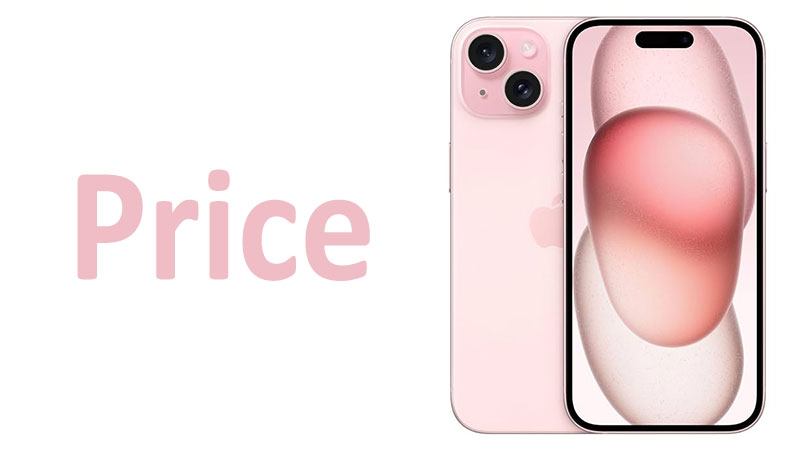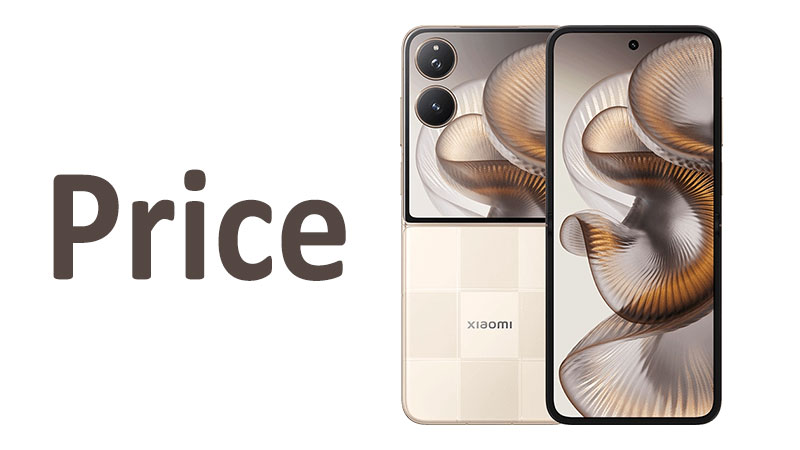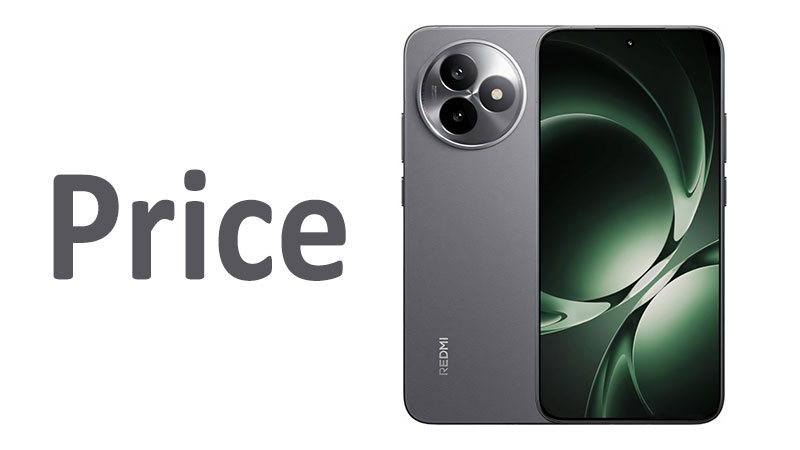The Apple iPhone 15 price is a critical piece of information for technology consumers globally. It significantly influences purchasing decisions for millions of people. This price sets the standard for high-end smartphone valuation. It determines the cost of entry into the extensive Apple ecosystem. The price varies dramatically depending on the specific country. Local taxes, import duties, and currency fluctuations cause these regional differences. This detailed article explores the expected and actual costs. We analyze the price points in India, the US, the UK, the EU, and Pakistan. Furthermore, we provide essential comparisons and financial advice for buyers. We help you understand the true value behind the iPhone 15 price tag.
Global Price Anchor: The United States (US)
The United States market traditionally serves as the global price benchmark for Apple products. Apple announces the Manufacturer’s Suggested Retail Price (MSRP) here. This price is the foundation for all international pricing conversions. The US price usually excludes local sales tax. Buyers must calculate this tax separately at the point of sale.
MSRP and Tax Exclusion
The official Apple iPhone 15 price in the US starts at $799 for the base 128GB model. This price point remained consistent with the previous generation. This consistency is a strategic move by Apple. It helps maintain a predictable upgrade cycle for consumers. However, the final price consumers pay is variable. State sales taxes can add up to 10% to the $799 base price. For example, a buyer in California pays substantially more than a buyer in tax-free Oregon. Therefore, the actual purchase cost is never the flat MSRP.
Carrier Subsidies and Unlocked Cost
The US market heavily relies on wireless carrier subsidies and installment plans. Major carriers like Verizon, AT&T, and T-Mobile offer incentives. They spread the iPhone 15 price over 24 or 36 months. Customers can often receive a substantial discount with a trade-in. They must agree to a long-term service contract to get this discount. Consequently, many users pay zero dollars upfront for the device. The cost is fully absorbed into their monthly service fee. The unlocked iPhone 15 price, purchased directly from Apple, requires the full $799 (plus tax) upfront payment. Buyers prioritize flexibility often choose this more expensive path.
Price Comparison vs. iPhone 14
The iPhone 15 launched at the same starting price as the iPhone 14. Both began at $799. This pricing stability provided significant perceived value. The iPhone 15 offered several key upgrades for the same cost. These improvements included the powerful A16 Bionic chip and a new 48MP main camera. It also introduced the popular Dynamic Island feature. This comparable starting price made the iPhone 15 a highly compelling upgrade. Buyers received a substantial technology leap without paying a price increase. This consistent price strategy is a major selling point for the device.
European Union (EU) Pricing Complexities
The European Union represents a large, unified market. However, pricing here is notably higher than in the US. This difference is primarily due to the inclusion of Value Added Tax (VAT). VAT is a consumption tax applied across all EU member states.
The Impact of VAT
The projected Apple iPhone 15 price in the EU started at €959. This price includes VAT. VAT rates vary from country to country within the EU. For instance, countries with higher VAT rates, like Hungary, see higher final prices. Countries with lower VAT rates have slightly reduced costs. This inherent tax inclusion explains the significant numerical difference from the US price. Furthermore, the base EU price must cover distribution and regulatory costs. These factors contribute to the higher sticker price. Consumers should recognize that the EU price reflects the tax liability upfront.
Price vs. Eurozone Neighbors
Pricing is generally standardized across the Eurozone countries. This includes Germany, France, Italy, and Spain. Therefore, a French consumer pays roughly the same price as a German consumer. Slight variations still occur due to logistics and specific retail adjustments. Some retailers offer promotional sales that temporarily alter the price. Consumers might find marginal savings by purchasing the phone in a neighboring country. However, the VAT difference is usually too small to justify the travel. The official iPhone 15 retail price remains mostly static across the Eurozone.
Financing and Promotional Offers
European carriers and retailers also offer flexible financing options. These allow buyers to pay the €959 over two or three years. Zero percent interest deals are less common in the EU than in the US. However, trade-in programs remain a popular way to lower the effective price. Consumers can trade in an older iPhone model for a discount. This reduces the substantial upfront cost. These financial tools make the high Apple iPhone 15 price more accessible. They help budget-conscious buyers acquire the premium device.
United Kingdom (UK) Price and Contract Dynamics
The United Kingdom operates with its own currency and a high VAT rate. This creates a specific pricing environment for the iPhone 15. The UK price is generally higher than the US price after currency conversion.
Sterling Price Point and VAT
The initial Apple iPhone 15 price in the UK started at £849. This price includes the UK’s high Value Added Tax. The price point is slightly lower than the EU’s €959 price. However, this is largely due to exchange rate differences at the time of launch. This £849 sticker price is the full cash cost of the phone. The high VAT rate ensures a significant portion of the cost goes directly to the government. This makes the UK one of the more expensive markets for electronics.
Contract vs. SIM-Free Cost Analysis
The UK market heavily favors mobile phone contracts. Carriers and major retailers offer various monthly plans. These plans bundle the phone, minutes, and data for one fixed fee. The iPhone 15 cost is spread out over 24 months or longer. This arrangement makes the phone appear cheaper to acquire. However, the total contract cost often exceeds the SIM-free price plus a separate monthly service plan. Savvy buyers compare the total expenditure over the contract term. The iPhone 15 unlocked price remains £849. This offers the greatest financial freedom for the consumer.
Competitive UK Landscape
Apple maintains a strong competitive position in the UK. The iPhone 15 competes directly with flagship models from Samsung and Google. These rivals include the Samsung Galaxy S-series and the Pixel Pro models. The iPhone 15 typically commands a higher price than comparable Android devices. This higher price is justified by brand loyalty and strong resale value. The high retention rate of iPhone users supports this premium price. Consumers in the UK are willing to pay more for the perceived quality and longevity of Apple products. This pricing premium is an established market factor.
India’s Premium Pricing and Discounts
India represents one of the most expensive markets globally for the iPhone 15. The price differential from the US is substantial. This high price is primarily the result of complex government tax structures and import duties.
High Import Duties and GST
The Apple iPhone 15 price in India started at ₹79,900. This is significantly higher than the converted US price. The difference is due to high import duties levied on fully built electronic devices. The Goods and Services Tax (GST) is also applied to the final price. These taxes inflate the cost of the phone dramatically. Consequently, Indian consumers pay a large premium for the device. This premium helps the government encourage local manufacturing. The high price tag is a direct result of these governmental fiscal policies.
Official vs. Effective Price
The official launch price of ₹79,900 is rarely the price Indian buyers pay. Apple and major retailers frequently offer aggressive financial incentives. These incentives include large cashbacks and no-cost EMI (Equated Monthly Installment) options. Credit card promotions with major banks are also very common. These promotional offers effectively lower the purchase price by ₹5,000 to ₹10,000. Therefore, the effective iPhone 15 price is often much lower than the official price. Buyers in India must actively seek out these promotional deals. This is the best strategy for minimizing their total expenditure.
Comparison with Competitors in India
The high iPhone 15 cost positions it in a unique segment in India. It competes with top-tier flagships like the Samsung Galaxy Ultra models. It also contends with premium devices from OnePlus and Xiaomi. The iPhone 15 often faces stiff price competition from these Android rivals. They offer comparable or better specifications for a lower price. However, the iPhone brand maintains a luxury status in India. This allows Apple to command a premium price despite the competition. The high perceived value of the iPhone justifies its cost for many consumers.
Pakistan’s Pricing Challenges and Volatility
Pakistan presents the most volatile and complex pricing environment for the iPhone 15. The price is driven by extreme import duties and a frequently fluctuating currency. This makes the iPhone 15 an ultra-premium, highly exclusive device.
Currency Devaluation and High Taxes
The initial Apple iPhone 15 price in Pakistan was estimated at PKR 240,000. This price is subject to constant change due to rapid currency devaluation. Furthermore, the Pakistani government imposes substantial regulatory duties and sales taxes. These taxes are a major component of the final retail price. The high price reflects the challenges of importing luxury goods into the country. The severe economic conditions amplify the final cost for the consumer. Consequently, the iPhone 15 is one of the most expensive smartphones in the world here.
PTA Approval and Price Split
The price is further complicated by the Pakistan Telecommunication Authority (PTA). The market effectively splits into two pricing tiers. The first tier is the official, PTA-approved price. Devices in this tier pay all applicable duties. They receive full network functionality. The second tier includes non-approved imports. These devices have not paid the taxes. They may face network blockage after a few months of use. The PTA-approved iPhone 15 price is significantly higher than the non-approved cost. Buyers must pay the substantial tax to ensure long-term usability. This regulatory environment creates a huge hurdle for the average consumer.
Strategies for Pakistani Buyers
Pakistani buyers must navigate these regulatory and financial hurdles carefully. They must prioritize purchasing a PTA-approved device for long-term use. The non-approved option offers a lower immediate price. However, it carries the high risk of future disconnection. Buyers should look for authorized retailers. They should also seek financing options from local banks. These banks may offer installment plans to manage the extremely high upfront cost. The iPhone 15 cost in Pakistan is more than a purchase price. It is a complex financial and regulatory decision.
Value Analysis: Pros and Cons of the Price
The high price of the iPhone 15 is a key factor in its market perception. This price structure creates distinct advantages and disadvantages for the buyer. It reflects the phone’s premium position.
Pros of the High Price
The high purchase price translates into several benefits for the owner. Firstly, Apple devices experience very low depreciation. This ensures a high trade-in value when upgrading to a newer model. Secondly, the price guarantees premium build quality. It confirms the use of high-end materials and superior components. Furthermore, the price buys access to the Apple ecosystem. This includes seamless integration with other Apple products and robust customer support. The long-term software support provided by Apple also ensures longevity. This means the phone remains current for many years. This commitment to quality and support justifies the high initial iPhone 15 retail price.
Cons of the High Price
The high price also presents clear drawbacks. The most immediate issue is the barrier to entry. Many potential buyers cannot afford the substantial upfront cost. Secondly, the cost of repair and replacement parts is much higher than for Android rivals. An accidental screen replacement can be very expensive. In addition, the high price is partly a “brand tax.” Consumers pay a premium simply for the Apple logo. This is true even when hardware specifications match cheaper competitors. Therefore, the high price is not always strictly proportional to the internal components.
Long-Term Value and TCO
Analyzing the Total Cost of Ownership (TCO) provides a clearer financial picture. TCO includes the initial purchase price, repair costs, and eventual resale value. While the initial Apple iPhone 15 price is high, the strong resale value significantly offsets the TCO. The phone’s long lifespan, supported by years of iOS updates, reduces replacement frequency. An iPhone typically maintains its functional value much longer than many Android counterparts. This longevity makes the high initial investment more justifiable over time. Buyers should view the iPhone 15 as a long-term investment. This perspective reveals its true financial efficiency.
Conclusion
The Apple iPhone 15 price, while consistently positioned as a premium product globally, exhibits dramatic variation by region. Starting at $799 in the US, the cost swells significantly in tax-heavy markets. The price reaches extremes in India (₹79,900) and Pakistan (PKR 240,000+). These regional differences are entirely due to local taxation and regulatory duties.
Buyers must focus on the effective price rather than the sticker price. US and UK buyers should explore carrier subsidies. EU consumers should account for the VAT inclusion. Indian buyers must maximize savings through popular bank offers. Pakistani consumers should prioritize the PTA-approved model for reliable service. Ultimately, the high iPhone 15 cost buys premium quality, unparalleled ecosystem integration, and superior long-term resale value. This longevity makes the investment worthwhile for many users. The iPhone 15 remains a leading choice for consumers seeking long-term reliability.
Frequently Asked Questions (FAQ)
Is the US iPhone 15 price the cheapest globally?
Yes, the US MSRP of $799 is the lowest global base price. It excludes sales tax.
Why is the iPhone 15 price in India so much higher?
High import duties and the Goods and Services Tax (GST) significantly inflate the retail cost in India.
What does the term “PTA-approved price” mean in Pakistan?
It means the device has paid all government taxes and duties. This guarantees full, uninterrupted network access.
Does Apple offer financing options in the EU?
Yes, major EU retailers and carriers often offer installment plans to spread the high VAT-inclusive cost.
How much value does the iPhone 15 retain after one year?
iPhones generally retain 55% to 65% of their value after one year. This is higher than most competitors.



